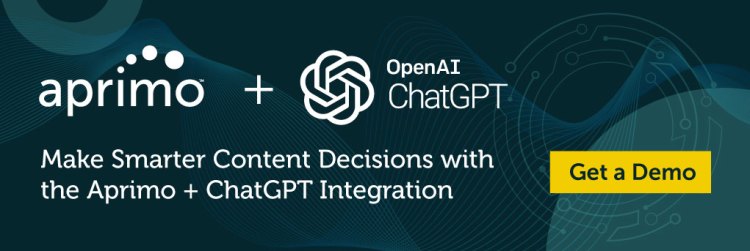Generative Pre-trained Transformer (GPT) models have revolutionized the field of natural language processing by offering state-of-the-art performance in various tasks, such as text generation, translation, summarization, and question-answering. However, to harness the full potential of GPT models for specific tasks or domains, it is essential to adapt them using the right training strategy. Choosing the appropriate approach can significantly impact the accuracy, consistency, and overall effectiveness of your GPT solution.
In this article, we will explore different training strategies for GPT models, including finetuning, few-shot prompting, and embedding customization. We will discuss the benefits and drawbacks of each approach, and provide examples of use cases and applications where each strategy might be best suited. By understanding these training methods and their implications, you will be better equipped to make informed decisions when selecting the optimal training strategy for your GPT solution.
1. Fine-Tuning
Fine-tuning is a process that takes a pre-trained GPT model and further trains it on a specific dataset related to the task you want the model to perform. This customization helps the model to better understand and generate responses that are more relevant to the given task.
Benefits of Fine-Tuning:
- Improved performance on specific tasks: By fine-tuning, the GPT model can be optimized to perform better on tasks tailored to your needs. This leads to a higher degree of accuracy and consistency in the generated responses.
- Increased accuracy and consistency: Fine-tuning allows the model to focus on learning patterns and features unique to your dataset, which often results in improved performance when compared to using a generic pre-trained model.
Drawbacks of Fine-Tuning
- Requires labeled datasets: Fine-tuning a GPT model needs a labeled dataset specific to your task. Obtaining or creating such a dataset can be time-consuming and may not always be feasible, especially for niche domains or tasks with limited data.
- Needs computational resources and time: Fine-tuning requires significant computational power and time investment. It may not be suitable for those with limited resources or tight deadlines.
Use Cases and Applications
- Complex tasks that require in-depth understanding: Fine-tuning is an excellent choice for tasks that demand a deep understanding of the domain, such as legal document analysis, medical diagnosis from textual data, or sentiment analysis in customer reviews.
- When a large labeled dataset is available: If you have access to a substantial labeled dataset related to your task, fine-tuning can help the model learn from this data to provide more accurate and consistent results.
Fine-tuning is a powerful technique to adapt GPT models to perform specific tasks. It is particularly useful when you have a large labeled dataset and require a high level of accuracy and consistency in the model’s performance. However, it comes with certain drawbacks such as the need for labeled datasets and considerable computational resources.

2. Few-Shot Prompting
Few-shot prompting is an approach that leverages the pre-trained GPT model’s ability to learn from a small number of examples provided within the input prompt. By giving the model a few instances of the desired task or behavior, it can generalize from these examples and perform the task without any additional training.
Benefits of Few-Shot Prompting:
- No additional training required: As few-shot prompting does not involve finetuning, there is no need for additional training, making it faster and more cost effective than fine-tuning for certain tasks.
- Suitable for simple tasks with limited data: Few-shot prompting is well-suited for tasks where you don’t have a large dataset or when the task can be easily understood with just a few examples.
Drawbacks of Few-Shot Prompting:
- May be less accurate or consistent than fine-tuned models: For complex tasks, few-shot prompting might not be as accurate or consistent as a fine-tuned model, as it relies on the model’s generalization ability from a limited set of examples.
- Not suitable for complex tasks: Few-shot prompting may not work well for tasks that require in-depth understanding or domain-specific knowledge, as it might not capture the nuances necessary for accurate performance.
Use Cases and Applications:
- Tasks with limited datasets: When a large labeled dataset is not available, few-shot prompting can be an effective way to obtain reasonable performance on a task using the existing knowledge of the pre-trained model.
- Tasks that can be easily described with a few examples: Few-shot prompting works well for tasks that can be effectively demonstrated using a small number of instances, such as text classification, summarization, or simple question-answering scenarios.
In summary, few-shot prompting is a quick and cost-effective method to adapt GPT models for specific tasks when you have limited data or resources. It is particularly useful for simple tasks that can be explained with a few examples. However, it might not be the best choice for complex tasks that require a deeper understanding or higher levels of accuracy and consistency.
3. Embedding Customization:
Embedding customization is a technique that involves adjusting the GPT model’s word or token embeddings to better represent specific words or concepts relevant to your task. The word embeddings are a vector representation of words that capture their semantic meaning, and customizing them can help the model better understand domain-specific vocabulary or concepts.
Benefits of Embedding Customization:
- Tailor the model’s understanding of specific words or concepts: By customizing the embeddings, you can enhance the model’s comprehension of particular words or ideas that might not be well-represented in the pre-trained model, leading to better performance in niche domains.
- Can enhance performance in niche domains: Embedding customization can be especially beneficial in tasks that involve specialized vocabulary or jargon not commonly found in general-purpose text corpora used for pre-training GPT models.
Drawbacks of Embedding Customization:
- Requires a good understanding of the embedding space: To effectively customize embeddings, you need to have a solid grasp of the embedding space and how it relates to the semantic meaning of words. This can be challenging and may require expertise in natural language processing and machine learning.
- May not significantly impact overall performance: Depending on the task and the extent of customization, the improvements in performance due to embedding customization may be marginal, especially when compared to other training strategies like fine-tuning.
Use Cases and Applications:
- Domain-specific vocabulary or jargon: Embedding customization can be valuable when your task involves understanding and processing domain-specific terms, such as medical terminology, legal language, or technical jargon.
- Specialized concepts not well-represented in the pre-trained model: If the pre-trained GPT model does not adequately capture certain concepts crucial to your task, customizing the embeddings can help the model grasp those concepts and improve its performance.
Embedding customization is a technique that can help GPT models better understand specific words or concepts relevant to your task. It can be particularly useful in niche domains or tasks involving specialized vocabulary. However, the benefits may be limited, depending on the task and the degree of customization, and it requires a good understanding of the embedding space to be effectively applied.
4. Combining strategies:
Different training strategies can be combined to maximize the performance of a GPT model for a specific task. By leveraging the strengths of each approach, you can create a model that is better suited to your needs.
When to use multiple strategies:
- Addressing multiple aspects of a complex problem: Some tasks may have multiple components that require different approaches. For example, you might use fine-tuning for general task understanding, while applying few-shot prompting for specific subtasks or edge cases.
- Balancing resource requirements and performance gains: Combining strategies can help you strike a balance between the need for computational resources and the desired performance. By using a mix of fine-tuning, few-shot prompting, and embedding customization, you can achieve better results while keeping resource requirements in check.
Challenges and best practices in combining strategies:
- Ensuring coherence and consistency between approaches: When combining multiple strategies, it is crucial to ensure that the model’s behavior remains coherent and consistent across different tasks and situations. Carefully evaluate how each approach impacts the model’s performance and adjust your strategy accordingly.
- Balancing resource requirements and performance gains: When using multiple strategies, it’s essential to consider the trade-offs between the resources needed and the expected improvements in performance. Choose the combination of strategies that best aligns with your goals, available resources, and the complexity of the task.
Combining different training strategies can help you create a GPT model that is more capable of addressing a variety of tasks or aspects of a complex problem. By leveraging the strengths of each approach, you can achieve better results while balancing resource requirements and performance gains. However, it’s essential to ensure coherence and consistency between the different strategies and carefully consider the trade-offs between resources and performance improvements. To ensure that generative AI produces consistent and on-brand messages across all channels, you can provide recommended prompts to your users using Aprimo. By giving your marketers access to the campaign brief through Aprimo, they will have the capability to achieve impressive results right from the beginning.
In this article, we explored various training strategies for GPT models, including finetuning, few-shot prompting, and embedding customization. While fine-tuning and embedding customization are supported only for GPT-3 models, few-shot prompting is more versatile and available for GPT-3.5 and GPT-4 models as well. Each approach comes with its benefits and drawbacks, making them suitable for different use cases and applications. At Aprimo, we can assist you in navigating through the latest challenges by collaborating with your company’s experts. Our team can support you in selecting the appropriate content from Aprimo, guide you in training your own GPT models regardless of their hosting location, and help you move towards achieving brand-compliant generative AI output gradually.
Have you heard about our new ChatGPT integration? Check it out here!



